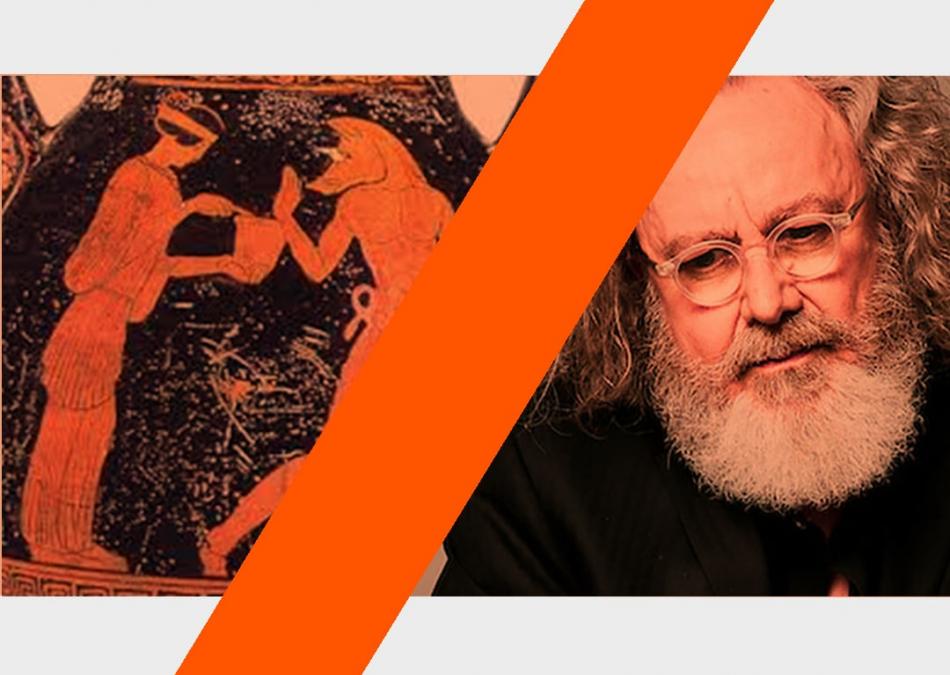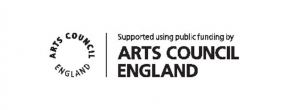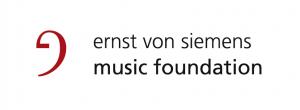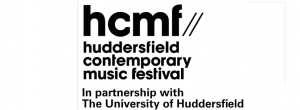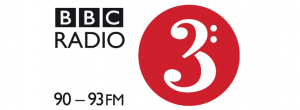Click here to go to the premiere film playout
Welcome to tonight's concert
We believe - especially now - that music matters to society, and the work of the London Sinfonietta with new music can act as a powerful catalyst for positive development in individuals and communities. Work with composers and artists can both reflect what is happening and, in some ways, influence change. As well as championing the power of new music as an art in itself, it is also important to us that we make a point of showcasing new work that engages with the way we live today. And, as always, we aim to give world-class performances that can be an inspiration to anyone who hears them.
We are pleased to have performed this piece from James Dillon – one of the UK’s most internationally celebrated and performed composers. The piece is an otherworldly, unnerving fairy tale, and we are proud to have co-commissioned it in celebration of the composer’s 70th birthday.
We hope you enjoy this concert, and we hope you'll join us for future events.
Andrew Burke
Chief Executive and Artistic Director
Did you enjoy this event? Please let us know by filling in a short survey.
James Dillon Pharmakeia (2020; World premiere)
Geoffrey Paterson conductor
London Sinfonietta
Recorded Sunday 22 November 2020 at Royal Festival Hall, Southbank Centre
Co-commissioned by the London Sinfonietta and Ensemble Intercontemporain.
Produced by London Sinfonietta in association with hcmf// and Southbank Centre
With the friendly support of the Ernst von Siemens Music Foundation
Support our work
All our events this seasonn are being presented online for free, so that as many people as possible can experience the best new music being written today. But if you are enjoying our live streams, please do consider donating at whatever level you can afford to support the London Sinfonietta’s work and musicians both now and in the future – in schools, on the concert platform and in the community. It might be the price of a coffee, or the cost of a ticket to one of our live events.
Text to donate:
Text NEWMUSIC 5 to 70450 to donate £5
Text NEWMUSIC 10 to 70450 to donate £10
Text NEWMUSIC 20 to 70450 to donate £20
Texts cost £5, £10 or £20 plus one standard rate message, and you’ll be opting in to hear more about our work and fundraising via telephone and SMS. If you’d like to give but do not wish to receive marketing communications, text NEWMUSICNOINFO 5, 10 or 20 to 70450.
James Dillon Pharmakeia 60'
i. Tenemos
ii. Strophe a
iii. Circe
iv. Strophe b
Tenemos [from the Greek temno to ‘cut’] has a more ancient predecessor in the Sumerian, temen, which referred to a sacred space, the origin of the Latin ‘templum’ (or the English ‘temple’), terms which also hold the root to the English word ‘time’. Here space and time are ‘cut off’ from everyday activities, the foundation of both the temple and ritual, these sacred spaces are often chosen by a process of divination. Divination (or sympathetic magic) comes through the observation of natural phenomena for ex. An olive grove may be seen as a dwelling that housed god’s image. Carl Jung relates the temenos to spellbinding or magic circles where the ‘temenos’ resembles among others a “symmetrical rose garden with a fountain in the middle (a squared circle)”.
Strophe (from Greek στροϕή, ‘turn, bend, twist’) is a concept which properly means ‘a turn’, as in the distribution of weight within a musical measure, or a turn from one side of a [Greek] chorus to another. Here strophe a turns away from ‘Temenos’ and towards ‘Circe’; strophe b turns away from ‘Circe’ and towards a by now silent Temenos.
Circe (Kirke) was a goddess of sorcery (Pharmakeia) who was skilled in the magic of transmutation, illusion, and necromancy. Circe’s (Kirke’s) name is derived from the Greek verb kirkoô meaning ‘to secure with rings’ or ‘hoop around’ – a reference to the binding power of magic.
The two movements (strophe a & b) cannot be performed independently of the cycle Pharmakeia.
James Dillon
Want to find out more about James Dillon?
Click here to read a feature by hcmf//
Click here to read an interview in VoxCarnyx
We are all of us old. Our genes, though endlessly permuted, we share with ancestors who first made fires by which to sit and nurse their children. Their drives and responses are still ours; where they saw holiness, we see at least a trace, a shadow.
James Dillon’s Pharmakeia is a work of what might be called internal archaeology. It is music that, with the present-day resources of an orchestra of disparate colours, sounds from within us our surviving senses of the eternally strange, the overpowering, the darkly magical.
Its title from the ancient Greek, Pharmakeia, is cognate with our word “pharmacy” and means “the use of drugs”. Drugs are turning points – from illness to health, from normality to excitation – and there is a lot of turning in this music: circlings; circlings within circlings; slow, effortful change; turns and returns.
Dillon goes again to ancient Greek for his movement titles, beginning with “Temenos”, the term for a sacred precinct, as around a temple. The example here is massive, made of great blocks, of which the first, instantly summoning the uncanny, is a duet for trumpet and trombone. The two instruments stay an octave apart and play only white notes. This might be a chant, but of a kind not heard before. Later blocks bring forward different groupings, but the tempo remains slow, though sometimes overlaid with quicker lines, suggesting creeper taking over an abandoned sanctuary. The atmosphere is sombre, and outlines of the initiating duet keep recurring. Sonic vestiges of the unearthly – very low tones, bell chimes, pulsings – find a place. But there are also familiar chords, shards appearing unexpectedly in walls of pervading mystery.
This movement, playing for over twenty minutes, is followed by one only a third as long: “strophe a”. Now a single block, still generally slow, presents a static harmony around a persistent note, B flat (the fundamental of the entire piece), bulging and deflating in diverse registers. One might think of the movement as a gigantic bell, within which various activities are proceeding – notably, a solo for muted trumpet. Normally applied to a verse of a poem or song, the word “strophe” originally meant a “turning” – a turning, in this case, within the larger turning, a turning from the sacred place to the sacred person: Circe.
A demigod-enchantress, Circe lived on an island, and her movement here, made of slow swells and filigree detail, could be heard as sea music – in contrast with the stone music of “Temenos”, and of almost the same length. Alternatively, the movement could be understood as a sequence of spells, of which Circe was a formidable wielder. (Another meaning of pharmakeia is “the use of spells”.) Early on comes a softly luminous passage in which the upper strings keep sounding a chord of G minor. Later the trumpet, now unmuted, is again stirring within static harmony, stepping upwards over and over. Further on yet a resonant low fifth from tuba and horn punctuates the music, and an echo of it returns in the close.
The fifth is there again, on cello and bass, as the second “strophe” gets going, soon joined by the G minor harmony of the violins and viola, all around an urging trombone line. These features are left behind as the layers increase, until the music settles on revolving repetitions. At this point, in the biggest circle of all, “Temenos” could start again.
Paul Griffiths

James Dillon is one of the UK’s most internationally celebrated and performed composers. His work spans all genres from solos to chamber music, orchestral to opera. The recipient of a number of prizes and awards including the Kranichsteiner Musikpreis and the Japan Foundation Artist Scholarship, he has also won an unprecedented four Royal Philharmonic Society awards, and was most recently awarded a BASCA British Composer Award for Stabat Mater dolorosa in 2015. He has been a guest lecturer at many universities throughout the world, and was named 2001 New York University Distinguished International Visitor. In 2007 he was awarded an Honorary Doctorate by the University of Huddersfield and in the same year he was appointed Professor of Composition, University of Minnesota.
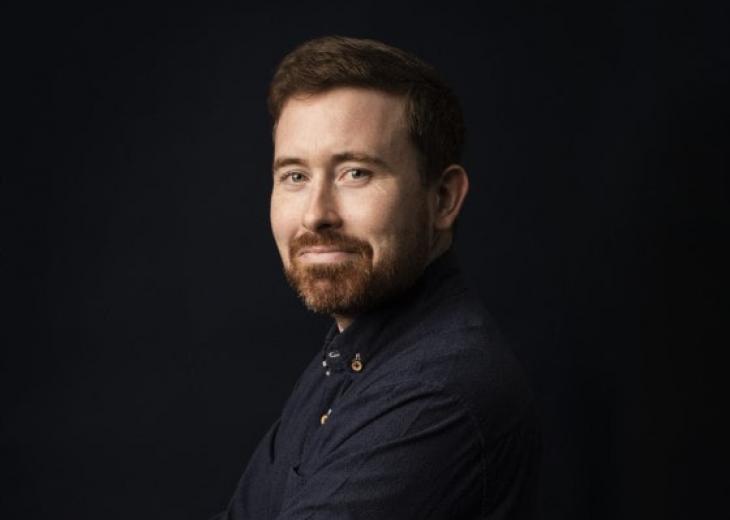
British conductor Geoffrey Paterson is admired for his impressive grasp of detail, responsiveness to musicians, and his ability to shape and make music from the most complex scores with natural authority.
Plans in 20/21 include a streamed BBC Prom from the Royal Albert Hall with the London Sinfonietta (whom he conducts regularly) and appearances with the BBC National Orchestra of Wales, Royal Liverpool Philharmonic, Orchestra of the Age of Enlightenment, Copenhagen Philharmonic, Nash and Asko Schoenberg ensembles. Recent highlights have included appearances with the Philharmonia Orchestra, Danish National Symphony Orchestra, Aurora Orchestra, Orchestre National de Lille, National Orchestra of Belgium, Basel Sinfonietta, BBC Scottish Symphony Orchestra and Scottish Chamber Orchestra.
Geoffrey studied at Cambridge University where he also took composition lessons with Alexander Goehr followed by studies at the Royal Scottish Academy of Music and Drama. Having won both First Prize and the Audience Prize at the 2009 Leeds Conductors Competition, he went on to participate in the Luzern Festival conducting masterclasses with Pierre Boulez. During his time on the Royal Opera House Young Artist Programme he assisted conductors including Antonio Pappano, Mark Elder, Andris Nelsons and Daniele Gatti on an extensive repertoire. For two seasons he worked in Bayreuth as musical assistant to Kirill Petrenko for Der Ring des Nibelungen.
London Sinfonietta Players
Karen Jones flute/piccolo
Gareth Hulse oboe/cor anglais
Mark van de Wiel clarinet/bass
Jonathan Parkin contrabass clarinet
Jonathan Davies bassoon/contrabassoon
Zoë Tweed horn
Christian Barraclough trumpet
Byron Fulcher trombone
Ben Thomson tuba
Jonathan Morton violin 1
Hilaryjane Parker violin 2
Paul Silverthorne viola
Tim Gill cello
Enno Senft double bass
Elizabeth Burley piano/organ
Clíodna Shanahan piano/organ
David Hockings percussion
Hal Hutchison stage manager
Lesley Wynne orchestral personnel manager
Film
Helen Mansfield video director
Tony Simpson lighting design
Anna Charlton script supervisor
Jonathan Wix score reader
Adam Flynn film editing
Andrew Wyard vision mixer
Darren Poole camera operator
Giles Pritchard camera operator
Dave Mortlock camera operator
Sarah Hill camera operator
Mick Shenton production manager
Andy Hogan technical supervisor
Dan Halford sound engineer
Naomi Jackson sound technician
Lennie O'Dwyer stage technician
Kerri-Anne Hughes stage technician
Cressy Klaces lighting desk programmer
Andrew Burke executive producer
Did you enjoy this event? Please let us know by filling in a short survey.
London Sinfonietta is grateful to Arts Council England for its generous support of the ensemble, as well as the many other individuals, trusts and businesses who enable us to realise our ambitions. Click here to find out more about our current supporters, or alternatively please click here to find out more about how you can support us.
